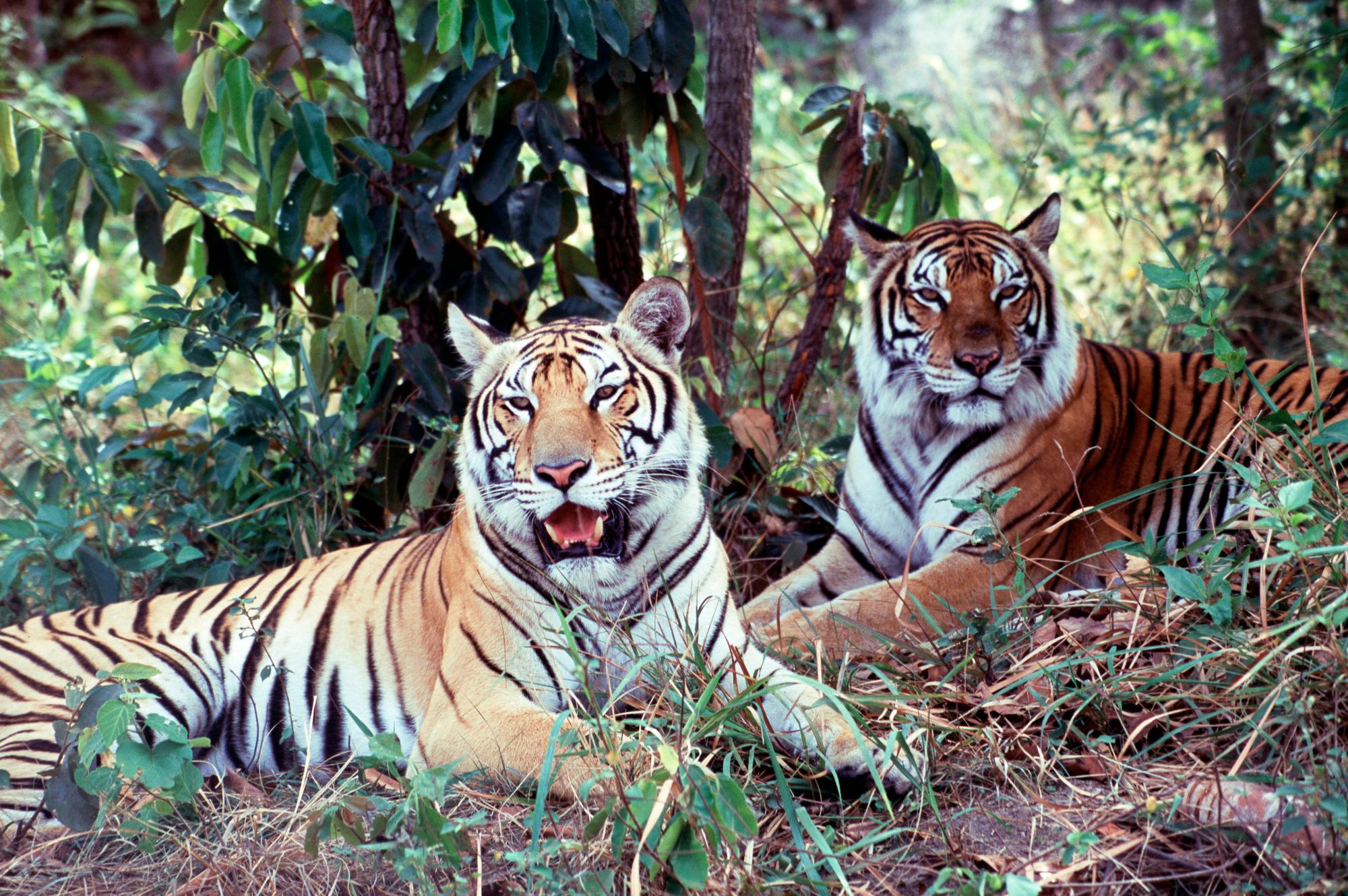This post was updated on December 8, 2020.
Editor’s note: In the past century, 97 percent of the world’s tiger population has vanished, leaving only about 3,900 individuals left in the wild in 2017. Poaching, deforestation and development have driven this sharp decline. Now, from the pine forests of Russia to the rainforests of Indonesia, a new threat looms for these remaining tigers: climate change.
1. Rising sea levels
Studies show that rising sea levels are shrinking coastal habitat for hundreds of endangered Bengal tigers that rely on India and Bangladesh’s mangrove forests, the largest in the world. Higher waters erode this patchwork of islands, called the Sundarbans, and cause salt water to migrate into fresh water, polluting the tigers’ drinking source. Tigers must find new freshwater sources and move to higher ground, escalating conflicts with communities living there.
2. Deforestation
Cutting down forests accelerates climate change while pushing species like the critically endangered Sumatran tiger to the brink of extinction. Unsustainably cultivated palm oil plantations are fast replacing Indonesia’s forests. This deforestation destroys important habitats, and could leave Sumatran tigers more vulnerable to illegal wildlife trafficking.
Keeping Indonesia’s forests intact helps protect tigers and address the impacts of climate change. Conservation International is working in Indonesia, Brazil and other key oil-palm-producing countries to keep deforestation out of palm oil supply chains — and protect crucial tiger habitats.
3. Temperature changes
Shifting temperatures are altering habitat for Siberian tigers in Russia and China, as Korean pine forests give way to fir and spruce trees — meaning less prey for hungry tigers that hunt in pine forests. Fewer than 600 Siberian, or Amur, tigers remain, heralding the possible extinction of the world’s largest cat within the next 100 years.
4. Natural disasters
As climate change accelerates, wildfires are becoming more frequent in ecosystems that do not typically experience a fire season, including temperate forests in Siberia. Longer, hotter and drier wildfire seasons are the new reality, threatening Siberian tiger habitat and food supplies. Climate change also drives more intense storms and flooding that destroys crops, forcing people to travel farther from their homes and into tiger habitats to make a living. In the Sundarban Islands, human-tiger conflict can result as displaced farmers gather seafood and honey in the same mangroves where tigers roam.
As climate change threatens the habitats and food sources of tigers, this iconic species also becomes vulnerable to poaching and to conflicts with communities. In many cases, protecting tigers — specifically by preserving their habitat, which is often forest — also helps combat climate change. By keeping forests standing, we’re giving tigers — and the rest of the planet — a fighting chance in the face of climate change.
Further reading
Leah Duran was a staff writer for Conservation International. Want to read more stories like this? Sign up for email updates. Also, please consider supporting our critical work.
